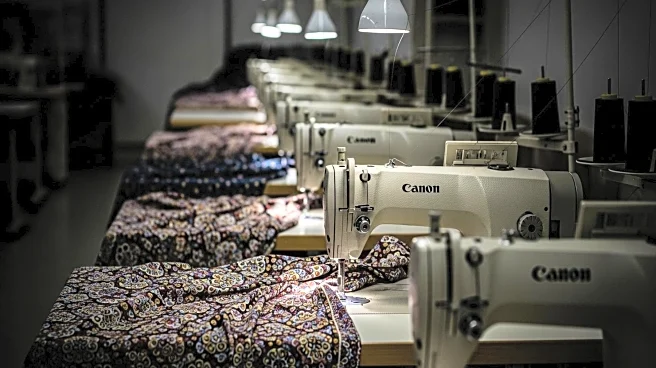What is the story about?
What's Happening?
A report by Great Place to Work reveals that women constitute only 26% of the Indian workforce in 2025, a figure unchanged for three years. The report, titled 'State of Inclusion: Where We Stand in 2025,' highlights the stagnation in gender parity despite previous growth. Women are the largest group among historically excluded groups (HEGs), but other categories like persons with disabilities, LGBTQIA+ employees, and veterans are less represented. The IT sector leads with over 33% HEG representation, while manufacturing and construction lag behind. Despite positive employee sentiment towards inclusivity, women face structural challenges in achieving equal participation and leadership roles. The report notes that women’s representation diminishes at higher leadership levels, with only 8% of CEOs being women. Maternity leave is identified as a significant barrier, with many women leaving the workforce due to lack of support and flexible work options.
Why It's Important?
The report underscores the persistent gender disparity in the workforce, highlighting systemic barriers that prevent women from advancing to leadership roles. This stagnation in gender parity can impact economic growth and innovation, as diverse teams are often more effective. The lack of representation in leadership positions means that women's perspectives and needs may not be adequately addressed in decision-making processes. The challenges related to maternity leave and workplace flexibility are particularly significant, as they contribute to higher attrition rates among women, affecting overall workforce stability and diversity. Addressing these issues is crucial for creating equitable workplaces that harness the full potential of all employees.
What's Next?
Organizations may need to reevaluate their diversity, equity, inclusion, and belonging (DEIB) strategies to address the barriers identified in the report. This could involve implementing more flexible work policies, providing clearer promotion pathways, and fostering a more inclusive culture. Companies might also focus on improving support for new mothers returning to work, ensuring they have the resources and flexibility needed to balance career and family responsibilities. As awareness of these issues grows, there may be increased pressure on businesses to demonstrate progress in gender parity and inclusivity, potentially leading to policy changes and new initiatives aimed at closing the gender gap.
Beyond the Headlines
The report highlights deeper cultural and systemic biases that contribute to the underrepresentation of women in leadership roles. These include male-dominated leadership structures and unclear promotion pathways, which can create a 'boy's club' atmosphere that is difficult for women to penetrate. The findings suggest that achieving true inclusivity requires not just policy changes but also a shift in organizational culture to value diverse perspectives and experiences. Additionally, the report points out that LGBTQIA+ employees face similar challenges, indicating a broader need for inclusivity across different identity groups.
AI Generated Content
Do you find this article useful?














